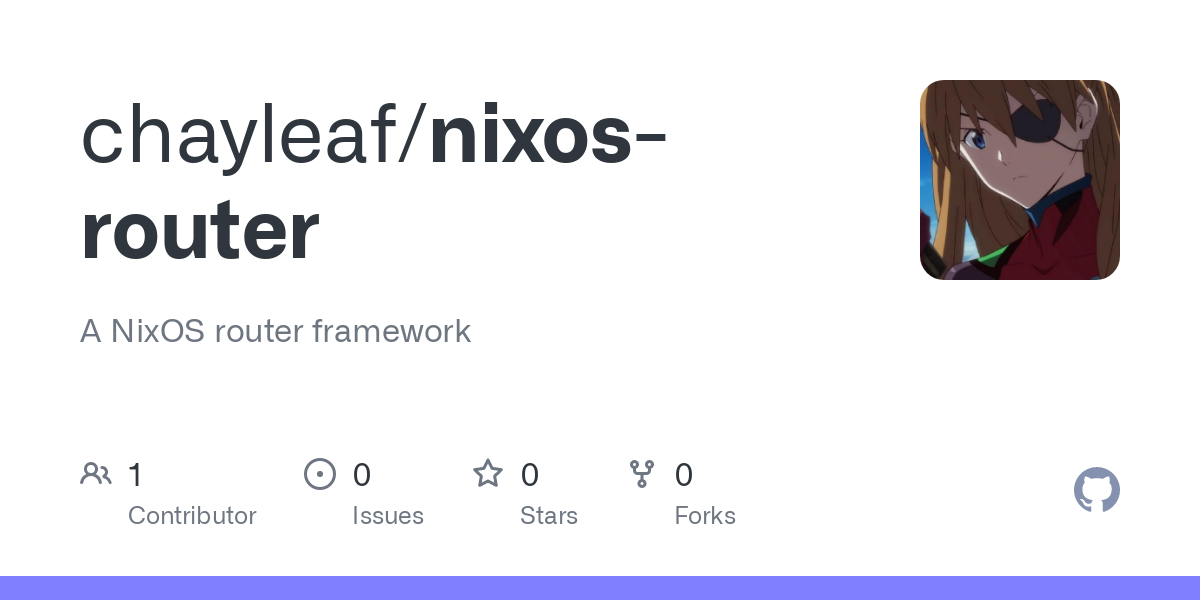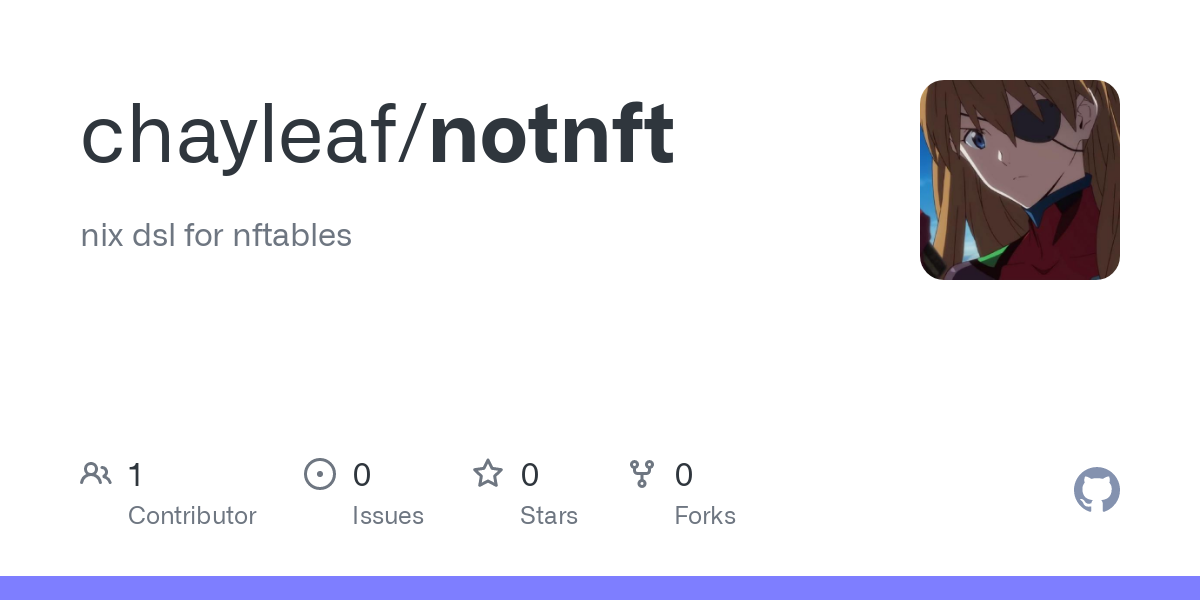One of the creators said “that’s not the original intention, but sure, you could read it that way too” in some interview
- 5 Posts
- 96 Comments

 2·11 months ago
2·11 months agoI mean it’s probably been a couple years, which is precisely why I don’t remember it, I probably would’ve if I’d started using it like 10 years ago

 3·11 months ago
3·11 months agoDid you first start with Vim or Neovim?
I probably started with Vim, but I honestly don’t see much reason to use it over Neovim besides better out of the box fbcon support

 3·11 months ago
3·11 months agoWhich does beg the question why the others haven’t implemented such functionality (yet)?
Helix continues the work previously done by Kakoune (some people prefer Kakoune over Helix anyway). As to why - because it, like any other computer science topic, is a topic of active research, and Kakoune is the next generation of research into modal editing. Disclaimer: I use Neovim because it works well enough for me (it does offer more configurability, but I doubt I use it that much) and I don’t want to learn another set of hotkeys (which is similar enough, but still different).
I shouldn’t expect remote accessing some random server will allow me to use Helix, right?
That’s right, but as a Neovim user, it’s hard for me to use Vi, because it lacks many features, and I don’t know which ones. When you start going from basic to advanced knowledge, it sadly doesn’t translate. Of course, I would still pick Vi over Nano any day.
There’s a similar problem with many shells (fish, readline (bash)) that don’t fully implement Vim’s features, so their Vi mode sucks, but I still use it.

 3·11 months ago
3·11 months agoyes, if that AUR was in a centralized git repository, and kept track of inter-package compatibility, and centrally cached prebuilt versions of the packages for every single update, and you could also easily modify any of the packages, and there was a way to autogenerate build scripts, and and and…

 3·11 months ago
3·11 months agoOkay Ubuntu is bad but it doesn’t have anything to do with Oracle… Did you confuse them with Canonical?
But yes, this hasn’t been an official Canonical project for a long time… afaik

 8·11 months ago
8·11 months agoMost phones have no mainline Linux support, and require something like ubports, which can use an unholy hack to run Linux userspace based on Android drivers and kernel. I think this one can be installed to just about any Android phone (worst case you can use the generic GSI image, which should work but be slow). Personally, I’ve never once bricked a phone by flashing it, and I’ve been doing it since ~2015 (don’t remember the year, but it was a Lenovo S660).
OnePlus 6 is a 5 year old phone with a SoC that has comparatively high development velocity (SDM845), which is why it’s finally getting close to full mainline support for basic features like calls/SMS/camera/sensors (still not fully there, and yes sensors are needed, they make stuff like autorotate and turning touchscreen off when you put your phone to your ear during a call work). If you want to tinker with Linux, I recommend a Pinephone; though Mobian did mention how frustrating its ecosystem is in their blog. Maybe Pinephone Pro or Librem are better, but they’re way way way more expensive. If you want a daily driver, I recommend a OnePlus 6/6T as explained in the article, or some other SDM845 phone, and maybe don’t DIY if you don’t have the basic experience in working with ARM SBCs and Android ROMs like me lol.
postmarketOS is probably the smoothest experience you’ll get on a wide range of devices, and I highly recommend it. Most other mobile Linux distros are often more or less piggy backing off their work (though of course other distros create cool stuff too).

 12·11 months ago
12·11 months agostrictly speaking, NixOS doesn’t have repositories.
NixOS has “derivations” (rules are written in the Nix language to generate a script that builds a package, which is called a derivation - yes, everything is built from source to the extent possible/reasonable) and “platforms” (the system that builds the derivation OR the system the derivation is built for). A “platform” is e.g. the CPU architecture, the libc used, the target kernel (there’s most support for Linux and Darwin, which is the macOS kernel, but e.g. FreeBSD is supported to some extent too). The derivation code may well be shared across platforms, though often platform-specific workarounds are required.
Of course, different platforms have different support. Some platforms have derivations from nixpkgs (the NixOS git repo) regularly built for them and put into the official binary cache (which stores the derivation outputs, i.e. ready-built packages for a certain set of inputs, which generally match what you would’ve built from source because Nix strives for reproducibility, you’re still free to override a package’s inputs and build it from source). linux-aarch64 is one of such platforms. Other platforms may only have a small set of core packages like gcc built for them, or simply require building absolutely everything from source.
The reason nixpkgs is not a repository (though I guess you could call it one) is because it only provides rules to build a package, but not the package itself. Some derivations (e.g. for Gog games) even require you to add some non-redistributable files to the Nix store manually. The derivations may or may not build correctly for each platform they’re supposed to work on.
The reason the binary cache is not a repository is because it’s just a cache for nixpkgs - it stores every derivation’s output (if the build doesn’t fail), even if that derivation is one that downloads a package’s source code (yes, that’s a derivation too), even if the derivation is from many years ago (which has historical value, as you can revert nixpkgs to an old version and still be able to download prebuilt versions of packages).
Together, they form something like a repository, but it’s still way too different. For example, unlike on Arch, I can stay on the same nixpkgs version for a long time without updating, which I really prefer because I have to build 3 kernels on each update, since I’m syncing the nixpkgs version of my 4 NixOS devices, only 1 of which doesn’t require a custom kernel config. Or I can always revert back to an older version of nixpkgs if a new one breaks something and it will still work. Or I can fork nixpkgs and change some stuff, and the stuff with changed inputs will have to be rebuilt locally, with stuff that didn’t change still available from the binary cache.

 1·11 months ago
1·11 months agoyeah that’s currently in the works (ca-derivations)
can confirm, I’ve recently had my btrfs partition on NixOS go permanently read-only because it ran out of metadata space (which you can’t extend without write access, even though btrfs does reserve 0.5GB of metadata space) so I’ve switched to bcachefs
They aren’t readily available here either, so I’m ordering it online. Unless you want to tell me you have less online purchase options than people in Russia.
I’ve read your comment history and you said you live around Balkans, fwiw back when I was in Montenegro in 2017 I ordered Zuk Z2 from Aliexpress, it stays well supported to this day, you should be able to do something similar.
what do you even mean “don’t support encryption”? Do you mean FDE? In that case PostmarketOS supports it, and you can get any other distro to use FDE if you tinker hard enough
A32 5G costs anything from $150 to $300. Trust me, I know what it means to be on a budget - I’ve never owned a phone that costed over $250. However, at that price I’d much rather get something like OnePlus 6 - an old phone with amazing community support (in fact, the new OnePlus 6 I bought from China costed $150) and specs that frankly are probably going to be better than newly released “budget” phones.
Don’t buy such phones. Personally though I’m never again buying a phone where I can’t install GNU/Linux.
just don’t use the official ROMs? this applies for every device btw, OEMs are not to be trusted
так без культурного контекста перевод не имеет смысла
 4·1 year ago
4·1 year agohttps://github.com/nix-community/nix-doom-emacs - declarative
https://github.com/hlissner/dotfiles/blob/master/modules/editors/emacs.nix - imperative (used by the doom emacs author, this is probably more hackable)
actually many “Unix people” got mad at cat becoming “bloated”, because of options like -v (which escapes nonprinting characters)

 1·1 year ago
1·1 year agobecause in Windows, blame doesn’t solve problems. You can blame Microsoft, or you can blame AMD, but either way nothing will change. In Linux, there’s some level of accountability because almost all software has maintainers (if not, you can step up personally). Similarly, you can’t hold Nvidia accountable on Linux - best you can do is not buy their GPUs.





I wouldn’t change anything, maybe make it more generic so the user could e.g. pick dmenu or rofi instead of alacritty+fzf